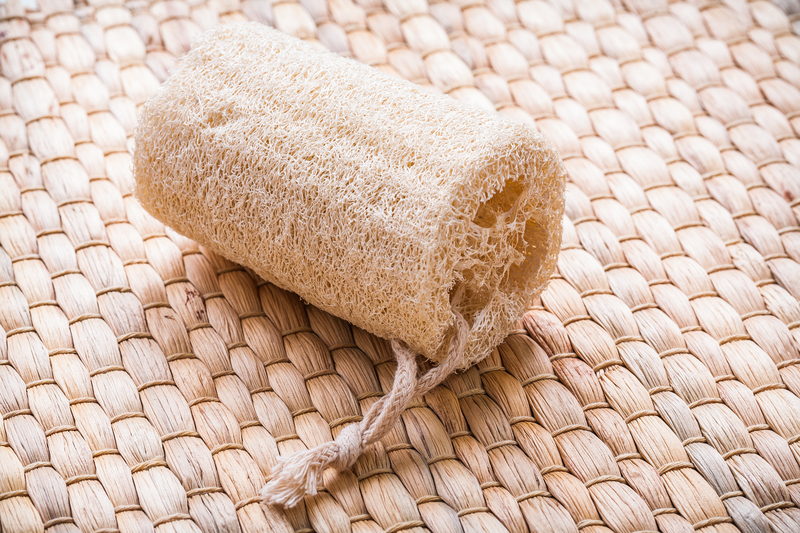Your Guide to a Fresh-Smelling Space: Damp Solutions
Posted on 11/09/2025
Your Guide to a Fresh-Smelling Space: Damp Solutions
Is your home or office burdened by unwanted dampness and the musty odors it brings? Many people struggle with keeping their spaces fresh and inviting due to issues with moisture. Controlling damp is vital not only for comfort but also for health and the longevity of your property. In this comprehensive guide, we'll walk you through the essentials of damp solutions so you can create a truly fresh-smelling space. Whether you're dealing with a single musty room or chronic moisture problems, this article delivers actionable advice and expert insights to help you breathe easy.

Understanding Damp and Its Impact
Excess moisture indoors is far more than an inconvenience. Damp environments foster the growth of mold, mildew, and bacteria, leading to odors, allergies, respiratory issues, and even structural damage. But what exactly is dampness? In simple terms, it's the presence of unwanted moisture within building materials or air, usually from leaks, humidity, or insufficient ventilation.
Common Causes of Damp
- Poor ventilation: Inadequate air circulation traps moisture inside.
- Leaking roofs and pipes: Water intrusion quickly leads to wet patches and musty smells.
- Rising damp: Moisture from the ground seeps up through foundations, especially in older buildings.
- Condensation: Warm air meeting cold surfaces leads to water droplets forming indoors.
Identifying the source is the first step to implementing effective damp solutions and achieving a fresh-smelling environment.
Signs Your Space Has a Damp Problem
- Persistent musty or earthy odors
- Visible mold or mildew patches
- Water stains on walls or ceilings
- Peeling paint or wallpaper
- Warped wood or flooring
- Condensation on windows, especially in the mornings
If you recognize these signs, it's time to take action with proven damp control solutions and restore a refreshing scent to your interiors.
Essential Damp Solutions for a Fresh-Smelling Home
Creating a fresh-smelling space begins by controlling and eliminating sources of dampness. Here are powerful strategies you can employ:
1. Improve Ventilation
Properly ventilating your environment is one of the easiest and most effective solutions for damp air. Stale, humid spaces trap odors and provide the perfect breeding ground for mold.
- Open windows daily to let air flow through your rooms.
- Use extractor fans in kitchens, bathrooms, and laundry rooms to remove steam and humidity.
- Consider trickle vents for windows, which provide a continuous flow of outside air.
- Leave doors open between rooms to encourage air movement.
2. Dehumidifiers: Your Ally Against Damp
For stubborn moisture, especially in basements or poorly ventilated areas, a dehumidifier is a highly effective damp solution. These machines extract moisture from the air, preventing mold and eliminating that telltale musty aroma.
- Choose a dehumidifier with the right capacity for your space (measured in pints per day).
- Regularly empty the water collection tray and clean the unit's filter.
- Monitor humidity levels with a hygrometer; ideal indoor relative humidity is between 40-60%.
3. Spot and Repair Water Leaks Promptly
Leaks are a primary cause of ongoing dampness. Address any source of water intrusion to prevent structural damage and foul smells.
- Inspect roofs, gutters, and downspouts often.
- Repair or replace damaged flashing or shingles.
- Check under sinks, around appliances, and behind toilets for dripping pipes.
- Seal cracks in walls or foundations with waterproof materials.
4. Protect Against Rising Damp
In buildings with no damp-proof course or an aging moisture barrier, rising damp can be a persistent problem. Effective solutions for rising damp include:
- Installing or upgrading a damp-proof course (DPC).
- Applying waterproof sealers or treatments to lower walls.
- Improving drainage around your building's perimeter.
5. Dry Clothes Outdoors When Possible
Drying laundry inside can add up to 2 liters of water into your home's air with every load--a major contributor to damp smells and condensation. If outside drying isn't feasible, consider using a well-ventilated utility area or a vented tumble dryer.
6. Clean and Remove Mold Thoroughly
Mold growth is both unsightly and a major source of unpleasant odors. For non-porous surfaces, clean with a solution of water and white vinegar or a commercial mold remover. Always wear gloves and a mask when cleaning mold to protect your health.
7. Use Moisture-Absorbing Products
Desiccants like silica gel or calcium chloride are great for small, enclosed spaces (closets, shoe cupboards, under sinks) where humidity accumulates. These DIY freshening solutions for dampness are affordable, easy to install, and low maintenance.
8. Address Floor and Wall Coverings
Carpets, rugs, and wallpapers tend to absorb and trap moisture, especially after water exposure. For perpetual fresh-smelling interiors:
- Replace water-damaged carpets and underlay with tiles, laminates, or vinyl if possible.
- Opt for moisture-resistant paints or wall panels in problem areas.
- Have your carpets professionally cleaned if they develop persistent odors.
Extra Tips for Maintaining a Fresh-Smelling Space
While controlling moisture is central, there are additional steps you can take to ensure your space always smells clean and inviting:
- Regular cleaning: Frequent dusting, vacuuming, and washing of soft furnishings removes potential odor sources.
- Natural air fresheners: Open bowls of baking soda, bowls of coffee grounds, or activated charcoal help neutralize odors.
- Add plants: Some houseplants, like peace lilies, spider plants, and Boston ferns, absorb toxins and improve air quality.
- Avoid masking: Instead of simply using sprays or plug-ins, address the root causes of damp and odors.
Preventing Damp: Long-Term Strategies
Prevention is the best damp solution, saving you time, money, and hassle in the long run. Consider these expert strategies for damp and odor prevention:
Regular Property Maintenance
- Inspect exterior walls and roofs at least twice a year.
- Clean gutters and downpipes to ensure proper drainage.
- Maintain outdoor landscaping: keep soil sloped away from foundations and avoid overwatering near the building.
Upgrade Insulation and Windows
Well-insulated spaces are less prone to condensation and therefore less likely to suffer from damp smells. If you have single-pane windows, consider upgrading to double glazing for energy efficiency and reduced humidity.
Monitor Humidity Levels
Keep a small, digital hygrometer in regularly affected spaces. Stay alert to spikes in humidity after activities like showers, cooking, or rainy weather, and take action as needed.
Educate Occupants
Everyone sharing your space should understand the value of good ventilation, proper cleaning habits, and immediate reporting of leaks or spills.
Solutions for Landlords and Tenants
Damp and musty odors are a common source of disputes in rented properties. Landlords should fulfill their legal obligation to provide a well-maintained, dry living space, while tenants must use the property responsibly.
- Landlords: Act quickly on reports of leaks, mold, or persistent odors--ignoring issues can have legal and financial repercussions.
- Tenants: Avoid drying clothes indoors, use extractor fans, and report problems promptly.
- Both parties: Keep communication open and document all reports and repair work for future reference.
When to Consult a Damp Specialist
If your efforts at controlling damp and odors aren't working, or if you spot widespread mold, structural damage, or ongoing leaks, enlist a professional. A damp specialist will conduct a thorough assessment, identify the moisture source, and recommend targeted damp treatment solutions.
- Persistent damp patches on walls or ceilings
- Strong earthy or rotting odors
- Signs of rising damp (tide marks or salt deposits on walls)
- Repeated reappearance of mold after cleaning

DIY Damp Solutions: When and How?
Many minor damp issues can be tackled with a little know-how, the right products, and elbow grease. When approaching DIY fresh-smelling solutions for damp issues, always:
- Identify the source: Don't just clean the surface--track down why and where moisture is entering.
- Protect yourself: Wear gloves and an N95 mask when cleaning mold or handling cleaning chemicals.
- Use safe remedies: White vinegar, hydrogen peroxide, and baking soda are effective, safe alternatives for mild mold and odor issues.
- Know your limits: For large areas, structural issues, or health symptoms, consult a professional.
Conclusion: Embrace a Healthier, Fresher Space
Whether you're managing a long-standing damp problem or simply aiming for a better-smelling home, these damp solutions put you back in control. With thorough moisture management, regular cleaning, and smart preventive habits, you'll enjoy a fresh-smelling, healthier living environment--free from musty odors and the risks they bring.
Remember, a fresh-smelling space isn't just a comfort; it's an investment in wellbeing and peace of mind. Start today by assessing your home's needs and taking the first steps toward a drier, cleaner, and more welcoming space.
- Ventilate regularly to keep air fresh and moving.
- Repair leaks and clean up water damage as soon as possible.
- Use dehumidifiers and desiccants for sustained control.
- Stay proactive with property maintenance and monitoring.
If you follow these damp solutions, you'll enjoy a fresh-smelling space every day.





